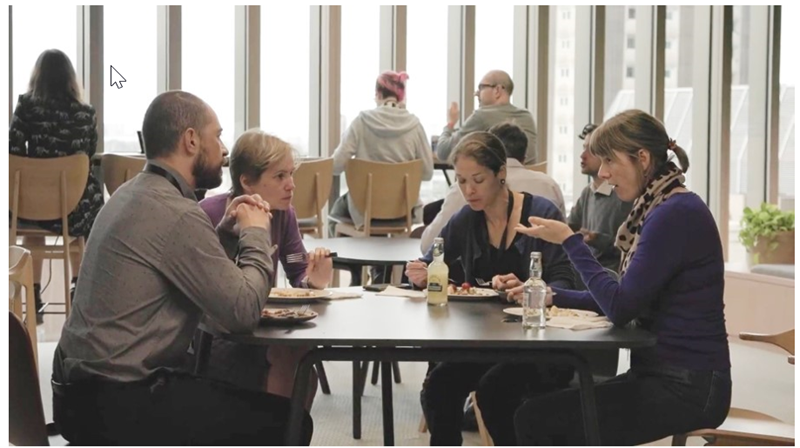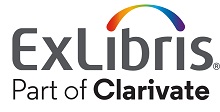Resource Sharing Leaders on Creating a Borderless Community
Resource sharing between libraries is nothing new, of course — but what is new is the ease with which potential resource-sharing partners can find each other. We spoke with three librarians who play leading roles in the Rapido/RapidILL resource-sharing community.

When libraries collaborate on resource sharing initiatives, they share more than library materials. They also share ideas, knowledge, and best practices for better serving their constituents.
Resource sharing between libraries is nothing new, of course — but what is new is the ease with which potential resource-sharing partners can find each other. We spoke with three librarians who play leading roles in the Rapido/RapidILL resource-sharing community. They shared experiences that they found rewarding on both the professional and personal levels. Librarians are kindling close relationships with new colleagues, building unexpected partnerships, and undertaking joint initiatives — even though the partner collaborators are sometimes oceans apart.

New connections, more collaboration opportunities
Drew Parker is Systems Librarian at Brandeis University in Waltham, MA and is also incoming coordinator of the ELUNA Rapido Working Group. He has kindled new partnerships through the Community Tab in Alma, which gives institutions a place to publish their library resource-sharing information, including lending terms, and allows them to be added to his library’s Alma instance as partners. “Currently there are 708 partners listed,” he reports, “which is pretty impressive. We’ve built strong partnerships with several of them. In terms of request volume, the biggest connection we've made has been SUNY. OCUL has also been a very substantial partner.”
Among their partners is also Lingnan University in Hong Kong, which found Brandeis in the Community Tab and in this case, made the initial connection. After reviewing the Brandeis lending information there, they reached out to Parker and requested the partnering arrangement. “If we hadn’t moved to Rapido, we would not have found that partnership,” Parker states. “We also have a partnership with the University of Hong Kong, as well as with WHELF, a consortium based in Wales. Those are examples of the international connections that we have made after adopting Rapido,” he shares. “It’s been a matter of us trying to be creative in building those relationships.”
On a more personal level, Parker values his time as incoming working group coordinator, where he can develop closer relationships. He has always considered the working group members to be colleagues he can reach out to. In particular, when Brandeis was looking for a way to add a scanable barcode to letters, Katie Sanders of the University of Wisconsin, Madison, explained how her library used barcode fonts.
Christopher Lee is the outgoing working group coordinator and Resource Sharing Manager for California State University libraries. He has found the working group to be a valuable experience as well, especially for learning how different libraries approach the same tasks from different viewpoints. He summarizes his feelings about his working group relationships: “I definitely see other libraries as collaborators, but also as friends that we collaborate with. It’s all about making friends.”

Lee also has been working with the Rapido development team which includes individuals from all over the world. “Working with people internationally is really fun,” he exudes. “Their perspectives are sometimes very different because they're dealing with different laws, different cultures, and very different traditions of how to do library work. But we all share the same core values — we want to share our materials and get all the right information for our patrons.”
Learning from others’ approaches to resource sharing
Kip Darling is Supervisor of Inter-Library Loans at Birmingham City University in the UKI. He is also the IGeLU RapidILL Working Group Coordinator, a role that has expanded his professional network globally. He describes experiences similar to the ones reported by his North American counterparts in building new relationships and sharing best practices. “Some of the libraries represented within the working group are colleagues that I wouldn't have ordinarily come into contact with, including library staff from the other side of the world, based in Australia and New Zealand,” he relates. “These interactions have helped spark new conversations about resource sharing and how we can work together.”
Through his leadership role, Darling actively champions the breakdown of geographical barriers, facilitating seamless access to scholarly resources and fostering a collaborative mindset within the international library community. "Getting to know librarians from other countries and cultures, and uncovering diverse practices and viewpoints about resource sharing encourages us to learn and grow," he shares. “Where libraries have alternative workflows or use advanced integrations with other software, it prompts us to re-evaluate our approaches critically, and we're inspired to consider whether we could do something similar.”

For his part, Lee tells about his experiences sharing best practices on a larger scale. Years ago, all 23 libraries in the Cal State system worked independently when it came to resource sharing. His predecessor got in touch with the Orbis Cascade Alliance consortium, which serves academic libraries in the states of Oregon and Washington and has a consortial resource-sharing program that CSU wanted to emulate. After multiple conversations, the Cal State libraries implemented a similar service.
Now, Lee works very closely with Lori Hilterbrand at the Orbis Cascade Alliance. While he had met her a few times and been in some of the same meetings, their collaboration really kicked off when they were both in the Rapido working group together, sharing ideas back and forth. They are currently working on what Lee terms a “kind of consortia of consortia,” which will allow all the member libraries to share seamlessly with each other even though some use different resource-sharing systems.
Collaborating to build a bigger resource sharing community
Lee and Parker are currently collaborating with each other to help Cal State implement ISO connections for sharing resources outside of Rapido. This will allow institutions to share resources if one institution doesn’t have Rapido. Brandeis had already successfully implemented ISO connections for resource sharing within the Boston Library consortium, and Lee is currently testing workflows developed by Parker’s group for connecting Rapido to partners who are on ILLiad. “That’s something we haven’t been able to figure out,” Lee admits. “So we’re trying to learn from them.”
In the grander picture, Lee reveals his observation that in a way, resource sharing is a service that, by nature, differentiates itself by opening libraries up to collaborate with one another. “That’s one of the things that I've always appreciated about resource sharing, as so many parts of the library are very siloed, even siloed within an individual’s area of expertise,” he explains. “Libraries have cataloging and other groups, but they don’t necessarily talk to other libraries and to librarians that are doing the same thing. In resource sharing, you have to be less siloed than the other groups because you have to work with other libraries, you have to have that communication. We are meeting more staff at other libraries and sharing our information. It’s not an official consortium, but it feels like one, and it’s growing,”
Through the Rapido/RapidILL resource-sharing community, librarians are creating new connections and collaborations. They find colleagues who share similar experiences, have solved similar problems, and with whom they exchange ideas and best practices. The conversations being held on a global scale elevate the library experience for all.
Learn more about the resource-sharing community.
SPONSORED BY
RELATED
ALREADY A SUBSCRIBER? LOG IN
We are currently offering this content for free. Sign up now to activate your personal profile, where you can save articles for future viewing










Add Comment :-
Comment Policy:
Comment should not be empty !!!